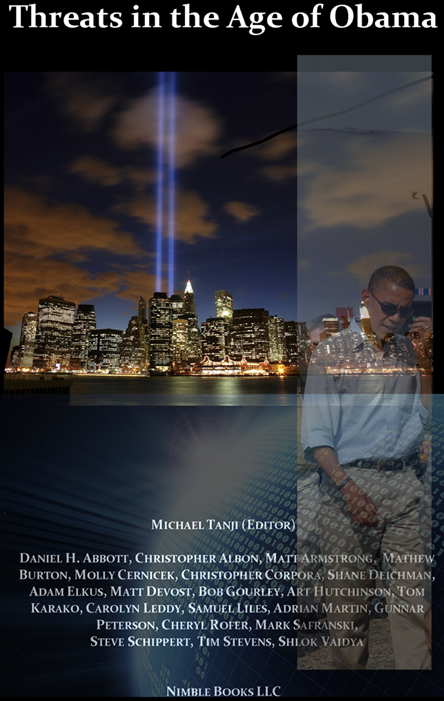Excerpts from Threats in the Age of Obama – Part I.
I thought I might give readers a taste of what is inside Threats in the Age of Obama in a series of excerpts from the featured authors. Here is Part I. :
“Arming for a Second War of Ideas”:
….Today, the U.S. must expand its horizon and realize there are more adversaries than “violent extremists,” “Islamists”, or other derivative labels for Al-Qaeda, Taliban, and associated movements from the Middle East to South Asia. Narrowly defining America’s adversaries is myopic and dangerous.
We need an effective and flexible arsenal of persuasion in the global information environment and global economic environment that goes beyond ideological support for terrorism and insurgency and into protecting broader interests, from the economy to global health to reconstruction and stabilization efforts. The new arsenalof persuasion must be adept against all adversaries in the entire global information environment.
“The Tangled Relationship Between Organized Crime,Terrorism and Proliferation”:
….The present threats to global security and stability increasingly come from non-state actors who are motivated to resist and undermine international conventions and sovereign rule to pursue bounded interests. Is it accurate or useful to analyze and assess these threats framed around the dominant resistant expressions-terrorists, traffickers, pirates and smugglers-or is there another way to understand and explain the activities associated with resistant non-state actors? What is the cost of continuing to assess these actors and activities in analytic “silos” of old security paradigms? How does this impact strategies and policies to addressthese nontraditional and often nonconventional threats? How would a multi-disciplinary set of theories and analytics assist in building a fuller understanding of these activities?
“Preparing the Mind to See”:
….The goal of a metacognitive, mental model modification effort might be limited in scope. (“How should I change my newsgathering habits to generate higher returns for my retirement portfolio next quarter?”) Or it might be sweepingly complex. (“How can we get decision-makers across multiple organizations to develop a shared, richly-nuanced framework for dynamically assessing how non-Western worldviews may challenge our physical security, economic resilience and liberal, democratic values over the next 50 years?”)
“The Future of Cyberspace Security: The Law of the Rodeo“:
Predictions of the future of technology are increasingly starting to sound like science fiction, with powerful computing grids giving incredible computational power to users and with autonomous robots becoming closer and closer to being in our daily lives vice just in computer science departments. Infotech, nanotech and biotech are fueling each other and each of those three dominate fields are generating more and more benefits that impact the other, propelling us even faster into a new world. Depending on your point of view the increasing pace of science and technology can be good or bad. As for me, I’m an optimist, and I know we humans will find a way to ensure technology serves our best interests
More to come as I shine a spotlight on the other authors in Threats in the Age of Obama, published by Nimble Books.



